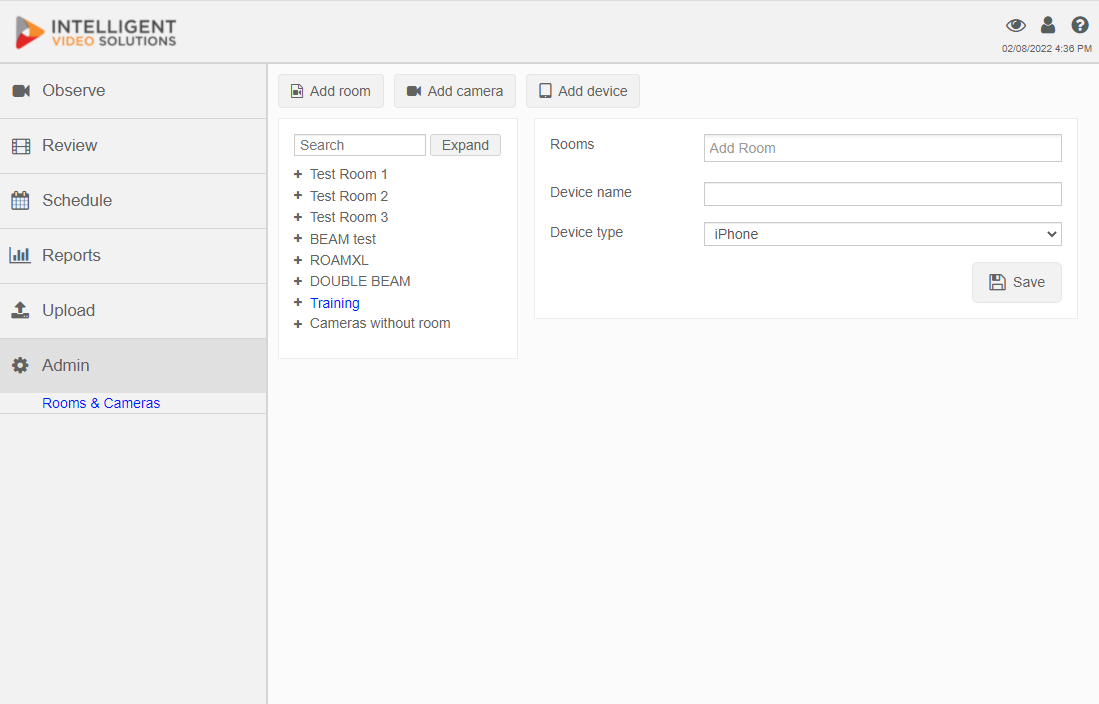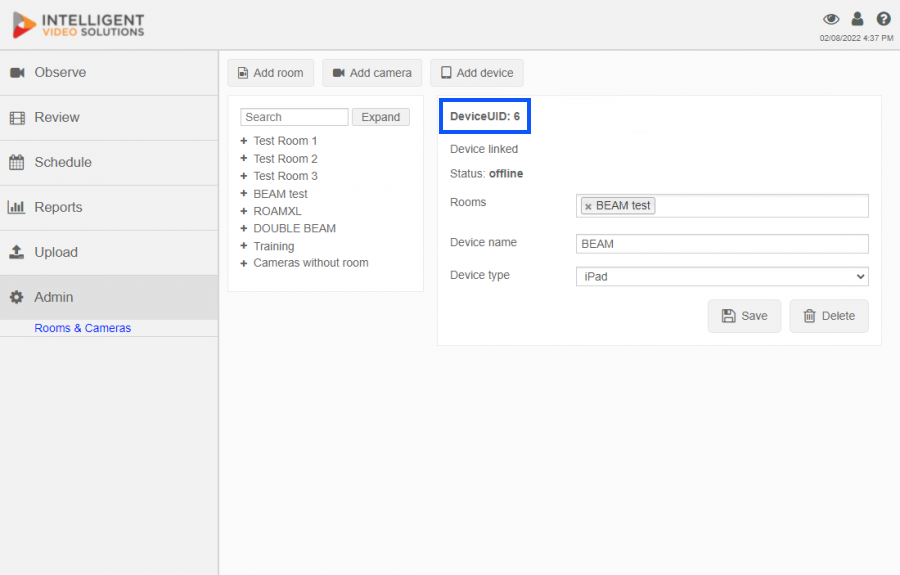Difference between revisions of "Installing BEAM"
IVSWikiBlue (talk | contribs) |
IVSWikiBlue (talk | contribs) |
||
| Line 1: | Line 1: | ||
| + | __TOC__ | ||
==Add an iOS Device on the Server== | ==Add an iOS Device on the Server== | ||
{{:Adding an iOS Device}} | {{:Adding an iOS Device}} | ||
Revision as of 15:52, 13 July 2022
Contents
Add an iOS Device on the Server
⚠
Important: Prior to adding any iOS devices, make sure that all user groups are configured with a default template for Information and Markers. If these settings are not specified, the iOS device will be unable to upload videos to the server.
- 1) Go to the client interface (using Chrome, Firefox, or other standard web browser).
- 2) Log in to the client (default username: “admin” password: “admin”).
- 3) Click on Admin -> Rooms -> Add Device.
- 4) Enter the rooms associated with the device.
- 5) Enter a name for the device.
- 6) Select the Device type (iPad/iPhone).
- 7) Click Save.
- 8) Locate the device in the list of devices and click on it.
- 9) Note the DeviceUID, as it will be needed to install the app on the iPad.
- For additional information about iOS device configuration click here.
✎
NOTE: The device status will show as offline, unless the device is placed into streaming mode. The device will also not be accessible for observation unless it is in streaming mode. This option is configured on the device itself.
🕮
See the IVS BEAM Software User Guide for more information.
Ipad/Iphone Installation
IVS Beam Software User Guide
Install SSL Certificate for BEAM iPads
Install SSL Certificate Profile on the iPad
- Transfer the same SSL certificate installed on the VALT server to the iPad.
- This could be done via email, OneDrive share link, Box share link, etc.
- See more under Tools, below.
- Install the certificate profile onto the iPad by following one of these two methods:
- Open the file from Mail, Files, Safari, or AirDrop.
- The iPad will prompt: "Profile Downloaded - Review the profile in Settings if you want to install it."
- Open Settings > General > VPN & Device Management
- Select the VALT server certificate in the list under the heading "Downloaded Profile" and click Install at the top-right
- You may be prompted to enter the device password, then click Install once again
- Open the file from Mail, Files, Safari, or AirDrop.
- Enable full root trust for the certificate, per Apple's documentation.
- Go to Settings > General > About > Certificate Trust Settings
- Under "Enable full trust for root certificates", flip the switch on for your installed certificate.
- Verify that the certificate is correctly installed by navigating to your VALT web page and checking for any certificate errors.
Tools
You can access and download the certs from the VALT server by using this 3rd party app Inspect - View TLS certificate
Common Issues
- I installed the SSL Certificate, but BEAM still isn't connecting to VALT
- If the SSL Certificate installed on the VALT Server has multiple certificate chains, ensure each certificate chain is individually installed on the iPad.
- I installed an SSL Certificate on the iPad, but I don't see it in the list of certificates to enable full root trust for
- Only root certificates will appear in this list. All certificate chains need to be installed, but only the root certificate needs to have the full root trust enabled.

